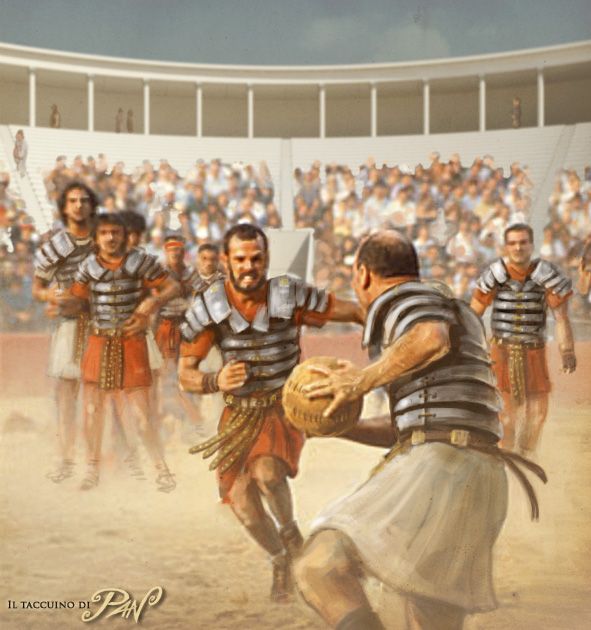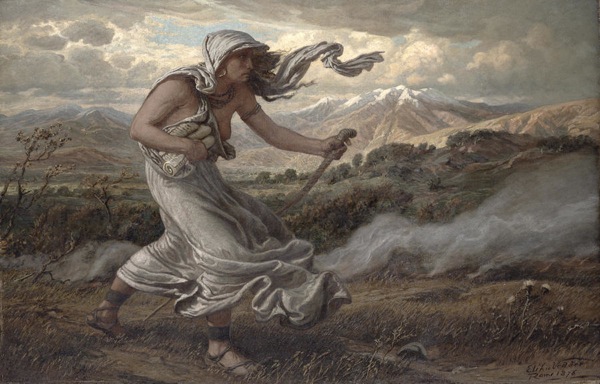One of the things I enjoy doing is bringing these historical worlds to life and that means discovering something about how people lives – including what they ate!
Sometimes we in the 21st century world with instant access to information, electricity, food and water tend to take all of our technological advances for granted.
By the same token, if we recognise that we have all these advantages we seem to imagine that people of earlier times were backwards because of their lack.
CS Lewis describes this thinking as ‘the snobbery of chronology‘ and it would be a foolish snob indeed to underestimate the Romans.
While many of us are familiar with the sophistication of their architecture, the robustness of their road networks, the precision of their aquaduct networks, less known is the mass production of food required to run an Empire (and its army).

Roman bread. The army ran on it and so did the rest of the populous.
Well, not only did those ingenious Romans manage to transport water vast distances, they also managed to harness that water to grind a phenomenal amount of grain.
We’re not talking about bucolic millhouses with one water wheel, we’re
talking water mills with a dozen or as many as 16 water wheels in the one
complex. This is flour milling on an industrial scale.
Water mills are powered in one of three ways. Overshot which means water flows over the top of the wheel. Undershot means the water flows beneath the
wheel. Breastshot means water is forced down, then under the wheel.
At the peak of production it was estimated that these huge mills could produce 4.5 tonnes of flour a day (which roughly equates to enough flour to bake 10,000 loaves of bread each day (one 720g loaf uses 423g of flour).)
Sadly today we are only aware of two sites where these giants of industry existed. But where there are two, there had to be more. Archaeologists and
historians all agree that every major Roman town and city will have had one
of these massive complexes.
The site that offers us the awesome scale is in Barbegal, France.

A model of the Barbegal aqueduct and industrial mill in France
Of course Rome itself will have had one of these powerhouses and indeed it did
on top of Janiculum Hill to the west of the city. These mills are believed powered by an undershot mill race.
In 270 AD Aurielus extended the Severan walls to protect the city against attack and of course, protecting the food and water supply. However, they
were not enough to overcome the invading Goths who disrupted the water
supply in 290AD.
I loved reading about the ingenuity, so I just had to use it in Dark Heart but it was for a sad occasion – the discovery of a body of a boy ritually sacrificed by the evil cult of Elagabalus.
Excerpt Dark Heart
He steered the horse off the riverbank and passed under a huge arch of an aqueduct. The Janiculum Hill rose in front of them. The horse changed gait to keep pace up the hill at Marcus’s urging. From here, Kyna had an unimpeded view of their destination.
The millrace, fed by the Aqua Traiana and celebrated among the city’s engineers, glittered in the moonlight.
Here, the terraced granary powered by sixteen water wheels produced the tons of flour a day needed to feed Rome’s insatiable appetite for bread.
Tonight it was also the site of a brutal murder and, like it or not, examining the child who had died was to be Kyna’s first duty as the magistrate’s personal doctor.
Marcus slowed his horse and waited for Janarius to catch up.
“Where’s the body?”
“On top of the hill itself,” Janarius replied, his answer nearly snatched away by the roar of the flowing water, louder here at the crest near the first of the massive wooden wheels.
Janarius led them several hundred yards from the mill to a protected grove. In the centre, lit by a dozen torches, was a lump covered by a soldier’s red mantle.
Marcus dismounted and helped Kyna down, offering a commiserating look as she took a few uncertain steps. He only released her when she nodded in mute assurance that she could stand on her own two feet.
As they approached the body, Kyna was conscious of Marcus’s presence at her shoulder, then, looking down at the covered shape on the ground, she was sure if she turned she would see him not looking at the body but at her. She ignored him and the other men who looked on, and knelt beside the mantle.
“Who found him?” she heard Marcus ask the onlookers. She ignored their conversation and attended to the life extinguished here. She said a prayer for the boy’s soul, regardless of what religion he practiced then, attending to his death, pulled back the fabric as far as his shoulders.[/vc_column_text][/vc_column][/vc_row][vc_row padding=”0″][vc_column width=”1/2″][vc_single_image image=”2419″ img_size=”full”][/vc_column][vc_column width=”1/2″][vc_column_text]
Created for book lovers
Join Elizabeth’s Library Book Club today for free reads, exclusive excerpts, competitions and more![/vc_column_text][mk_button corner_style=”rounded” size=”medium” url=”http://box5218.temp.domains/~lizabga3/index.php/homepage/book-club/” target=”_blank” align=”center” margin_top=”6″ animation=”fade-in” bg_color=”#ff0202″]Join Now!
[/mk_button][/vc_column][/vc_row]

